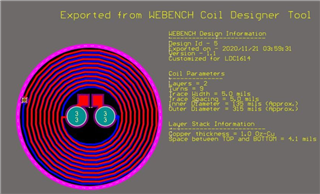Hi Team,
My customer is using LDC1614 Sensor but they are having a problem with LC coil design. According to them, when they powered up the circuit, the inductance's value increases with time continuously. The value is differing from LC coil to another LC coil and the one LC tank is increasing with time, for example 2533529900 >>>2632987655

Thank you.
Regards,
May


